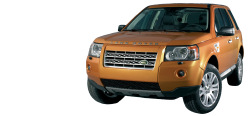
|
|
| Home · FAQ · New Posts · My Posts · PMs · Search · Members · Members Map · Calendar · Profile · Donate · Register · Log In |
 | Home > Technical > Problems with 2008 Freelander2 TD4 SE |
 
|
|
|
| Horneteer Member Since: 14 Dec 2012 Location: North east England Posts: 8  
|
Thanks for the very thorough rundown of potential problems with diesel contamination Old geezer.
|
||
|
| Horneteer Member Since: 14 Dec 2012 Location: North east England Posts: 8  
|
Now that my vehicle is running Ok again I have had time to check out the old fuel filter. I have cut it apart & no sign of any "black slime" suggested by Old Geezer, so can on assume it just blocked with sediment over time.
|
||
|
| Andy131 Member Since: 09 Dec 2009 Location: Manchester Posts: 2187 
|
Depends on what you intend to do.
|
||
|
| alex_pescaru Member Since: 12 Mar 2009 Location: RO Posts: 4642 |
Now, because of the EURO5 interface's independence, you can have the dealer tools with the same less than £300. Of course, you should have a laptop at your disposal.
|
||
|
| Andy131 Member Since: 09 Dec 2009 Location: Manchester Posts: 2187 
|
Sorry Alex it's a diagnostic aid, rather than a programming tool.
|
||
|
| gripper Member Since: 08 Sep 2016 Location: bowral Posts: 1 
|
Wifes TD4 cut out one cold morning about 100m up the road, she got the key out and tried to restart it, it would turn over but not catch. I looked at it, had a reduced engine warning, but still would not start. Later in the day went up with my son to push it home, low and behold it started, seemed to run ok, but the wife was freaked by the sudden failure. I talked to LR dealer, they suggested a crank sensor fault.
|
||
|
 
|
|
| All times are GMT |
< Previous Topic | Next Topic > |
Posting Rules
|
Site Copyright © 2006-2025 Futuranet Ltd & Martin Lewis
![]()


